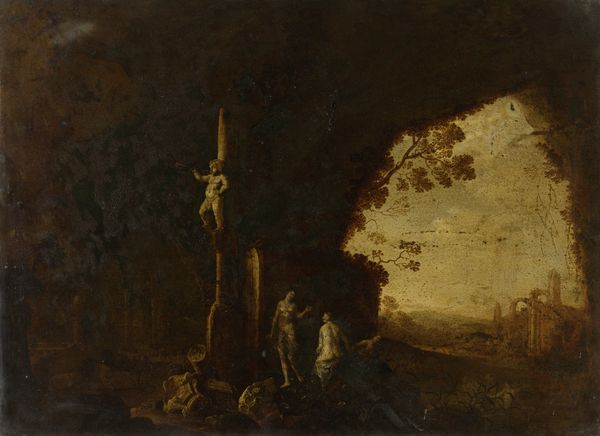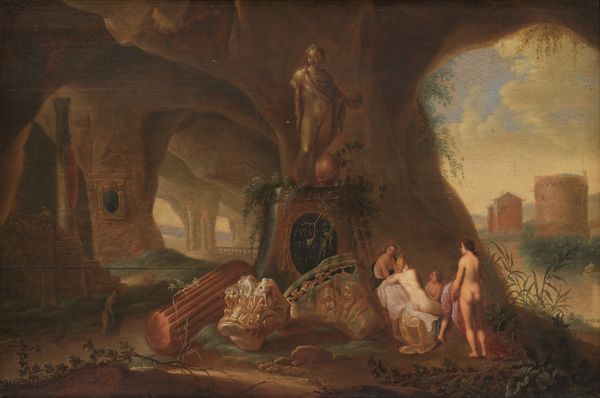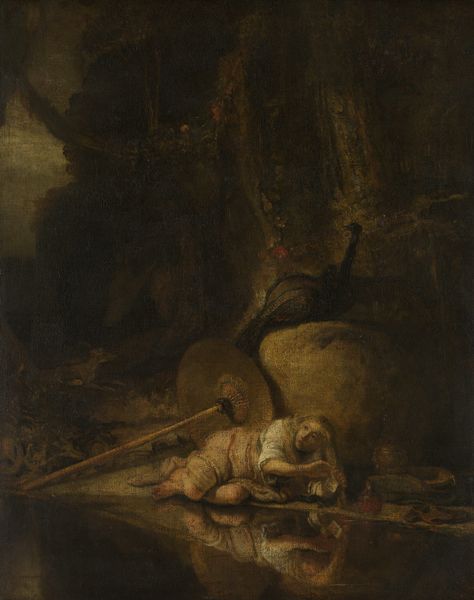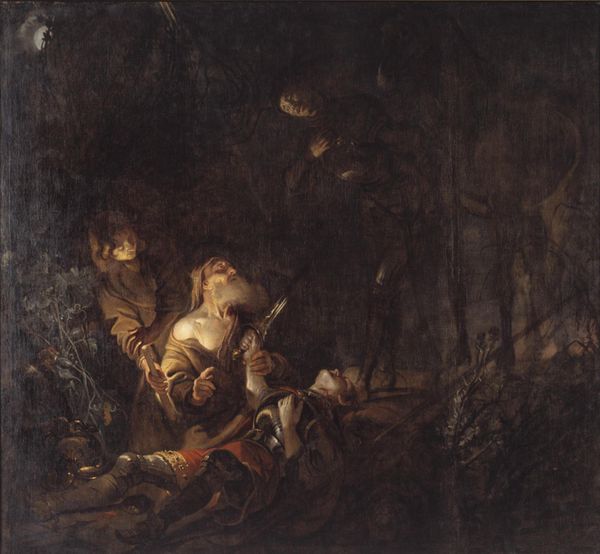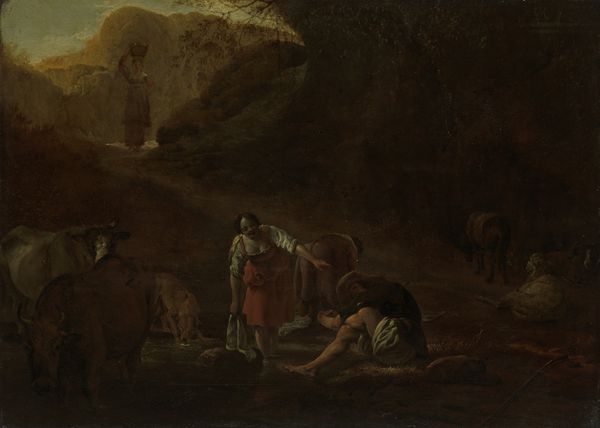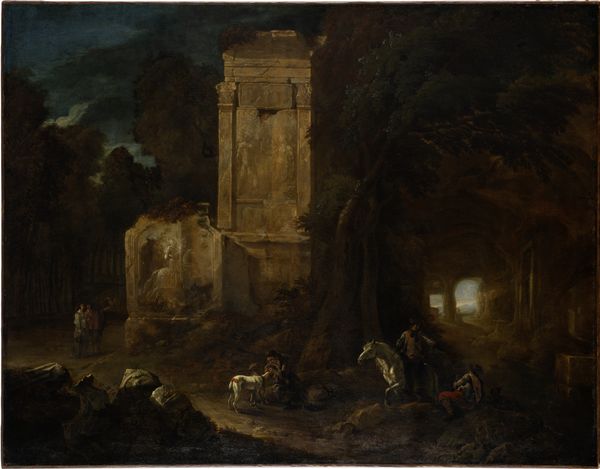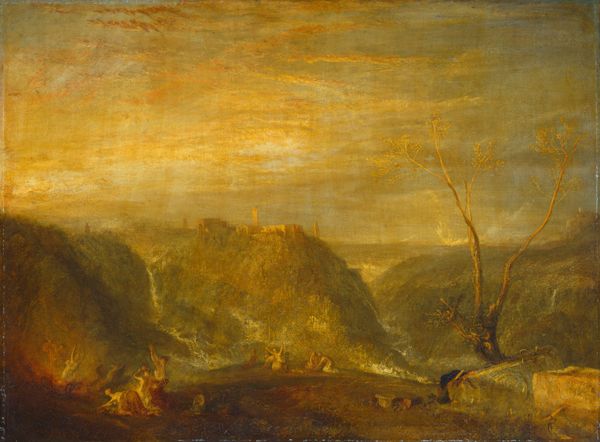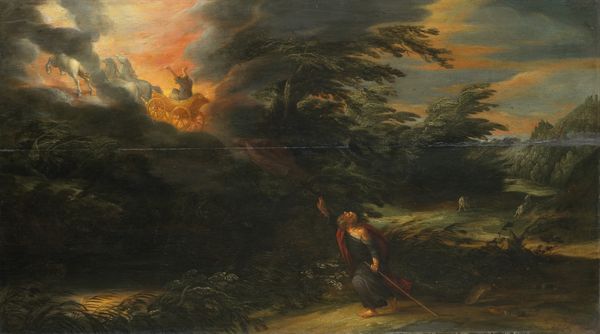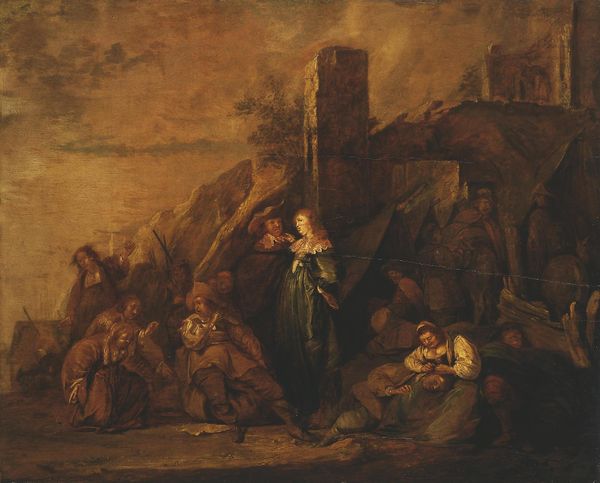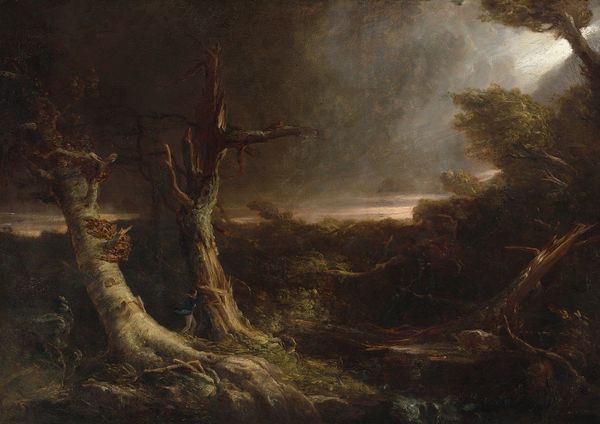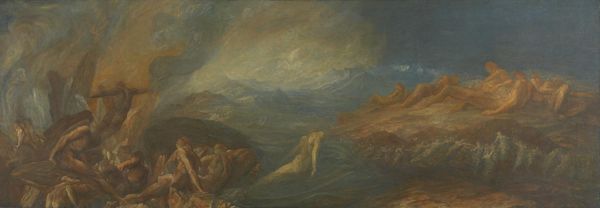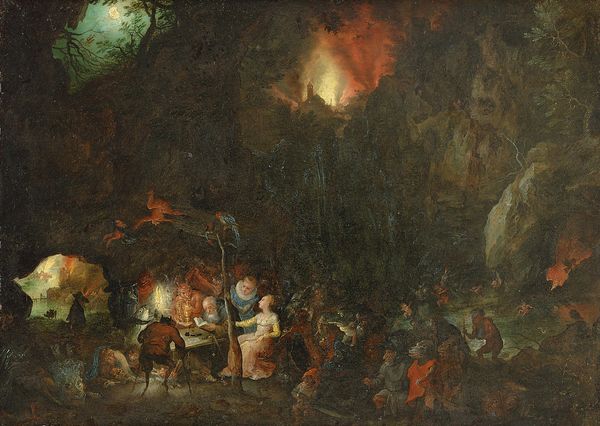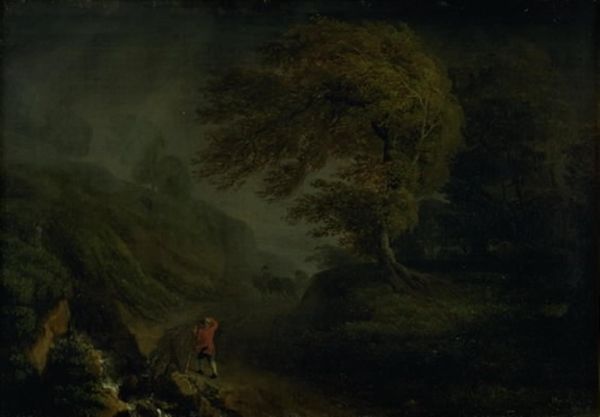
oil-paint
#
baroque
#
oil-paint
#
landscape
#
oil painting
#
genre-painting
#
nude
Dimensions: 60 cm (height) x 83.5 cm (width) (Netto)
Curator: Here we have Cornelis van Poelenburch’s “Bathing Nymphs in a Landscape,” believed to have been created sometime between 1609 and 1795. It is currently housed at the SMK, Statens Museum for Kunst. Editor: What strikes me first is this incredible, dreamlike grotto. It's a world both intimate and grand, a stage set for secrets and vulnerability. The golden light feels like honey dripping down the rocks. Curator: Poelenburch’s landscapes were highly sought after by collectors across Europe. This particular oil painting blends elements of the Baroque style with idealized classical forms. It also taps into a wider artistic and social fascination with mythical or pastoral themes, offering viewers a retreat from the everyday, into nature. Editor: Retreat is right! But there's an element of—dare I say—the male gaze at play here? I mean, the nymphs, bathed in light, seem more for our viewing pleasure than actually…bathing. Do you feel that contradiction at all? This imagined space of supposed female pleasure, actually existing in an exhibition, intended for mostly men? Curator: That's a very important consideration. Representations of nude figures, particularly women, were often tied to ideas of beauty, purity, or allegorical themes. Simultaneously, we also see evidence of how power structures shape those very representations. Poelenburch’s painting exists in a complicated visual and cultural discourse around sexuality and art, absolutely. Editor: So, the question then becomes: how do we, as viewers, engage critically with a piece like this? Is it about reclaiming the image, questioning the original intent, or simply appreciating the craft while acknowledging its historical baggage? Curator: Precisely. It's about understanding the context in which it was made, recognizing the potential power dynamics, and bringing our own contemporary perspectives to the table. Museums should play a vital role in this process by encouraging dialog around works. Editor: For me, I come away pondering the layers: The skill, the fantasy, the unease. It's a painting that stays with you, prompting questions, sparking debate— which, let's face it, is exactly what good art should do, even centuries later! Curator: Agreed. It's a testament to the artwork's enduring ability to engage us. To challenge us. Hopefully this reflection has enabled listeners to look again—and bring their own perspective.
Comments
No comments
Be the first to comment and join the conversation on the ultimate creative platform.
